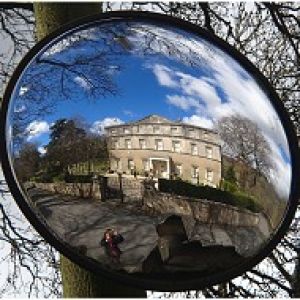of Ypres plains
On arrival at Ieper/Ypres from Halle, near Brussels, where we'd been staying with Steve's old friend Jacques and his partner Inge, we headed straight for the market square.
To backtrack a bit, I had originally wanted to visit the war grave of my great uncle John Joseph (Jack) Petre, who is buried at Cerissy-Gailly military cemetery, but that is in the Somme area, rather further from Dunkerque than we were able to go. However, the day before we left England, I met a man who turned out to be the author of a book called the Western Front from the air. This includes aerial reconaissance photography taken by the newly-formed Royal Flying Corps. My great uncle was an aviator, and would have been flying those planes before his death in 1917. Jack, though, was a fighter pilot, awarded the DSC and the Croix de Guerre in recognition of his services as a pilot at Dunkirk.
The author, Nicholas, had advised me to go to the In Flanders Field museum at Ieper/Ypres, in the restored cloth hall, so that's where we went, after CleanSteve had bought some Flemish cheese and mussels in the market. We were short of time, because we had to be back at Dunkirk/Dunkerque for the boat by 3pm, and the museum turned out to be an interactive experience, with (I kid you not) a rubber wristband with a poppy on it and an interactive chip that you had to swipe over barriers to open them. It was, indeed, somewhat like an Oyster card that would unlock the past for you.
How I wish I had read the leaflet that they gave us! It turned out that if I had logged in with my name and surname, I could have gained further information about Jack and had a more personalised experience. As it is, we rushed through, and I went up the hundreds of steps to the bell tower, from whence I took this shot. Ieper did look great from the air, but it is my intention to return and spend much more time in the museum, and also find Jack's grave at the Somme. At the time of his death, he'd been flying a biplane called the Nieuport Scout which was considered robust, but had a fatal flaw. The lower wing was weak and had a tendency to disintegrate in flight. You can guess the rest.
I don't want to say any more about Jack right now, as remembrance day is coming and I have something personal of his, but I will finish with some lines by the Gloucestershire ppoet, Ivor Gurney, whose words I rediscovered in the museum.
Memory, let all slip
Memory, let all slip, save what is sweet of Ypres plains.
Keep only autumn sunlight and the fleet clouds after rains.
Blue sky and mellow distance softly blue; these only hold
Let I my panged grave shall share with you. Else dead. Else cold.
Ivor Gurney, Bangour, October 1917.

Comments
Sign in or get an account to comment.


